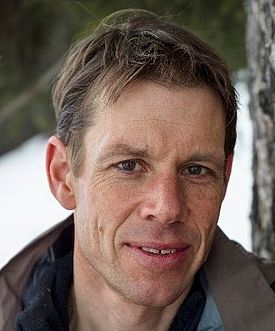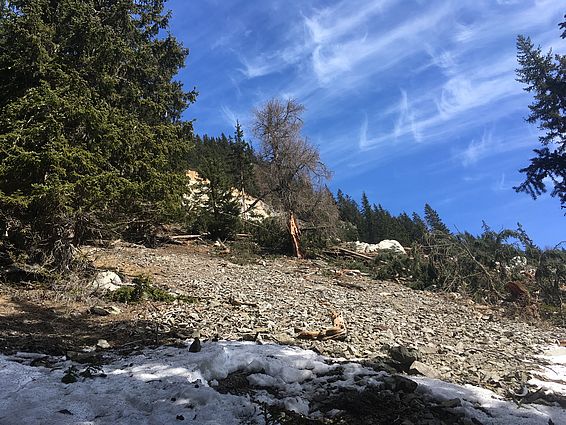16.12.2021 | Academia Raetica; Claudia Hoffmann | News SLF
Since July 2021, environmental scientist Peter Bebi has been the head of the CERC, the new SLF research centre for climate change, extreme events, and natural hazards in alpine regions. This centre brings together expertise, improves the interface between research and practice, and meets the needs of the mountain cantons.

Since the start of 2021, a new research centre has been operating in Davos, bringing together scientific expertise on the issues of climate change, extreme events, and natural hazards in alpine regions. The 'Climate Change, Extreme Events and Natural Hazards in Alpine Regions Research Centre' (CERC for short), part of the WSL Institute for Snow and Avalanche Research SLF, is currently being scaled up.
Strong connection with practitioners
Environmental scientist Peter Bebi, the head of the CERC, is responsible for the scaling-up process. He explains why the research centre was founded and what purpose it serves: "With the CERC, we are expanding the SLF's research spectrum without starting from scratch. Our ambition is that the CERC will quickly be perceived as a centre of excellence for alpine natural hazards and the alpine environment. We want to be the first point of contact for problems related to these topics. Above all, we want to improve the interface between research and practice by better meeting the needs of the Canton of Grisons and other mountain cantons as well as the communes. Our expertise is intended to make a useful contribution to the social and economic development of the Canton of Grisons."
New professorships with ETH Zurich

Bebi describes the main areas being worked on by six research groups at the SLF: "The research unit 'Alpine Environment and Natural Hazards', which was created in the summer and is headed by Nadine Salzmann, focuses on four topics: permafrost, remote sensing, alpine mass movements, and mountain ecosystems. In the case of mountain ecosystems, we are investigating, for instance, how the protective function of forests changes under the influence of various disturbances such as windfall or forest fires. By 'alpine mass movements' we mean particularly rockfall, avalanches, soil slips, and debris flows. What is new is that together with ETH Zurich we will be establishing a new professorship for this topic in Davos."
Wide range of topics
Remote sensing is an interdisciplinary cross-sectional topic. We use drones, infrared measurements, and sensors to, for example, collect data for the early detection and monitoring of natural hazard processes. In connection with permafrost, we are particularly interested in the consequences of climate warming. The thawing of permafrost can cause the ground to become less stable, which can result in subsidence, landslides, scree or soil creep, debris flows, or rockfalls. As regards the other topics covered by the centre, two further research groups are working on the focus areas 'Weather and climate extremes in the Alpine region' and 'Risk and resilience'. A joint professorship with ETH Zurich for weather and climate extremes is also envisioned.
Creating long-term positions
The CERC has been recruiting new employees since the beginning of 2021. Bebi is delighted that the research centre is creating attractive, long-term positions for highly qualified scientists in Davos: "We have already filled seven new positions, which in turn will generate additional jobs." To accommodate the new employees, an extension building with laboratories, offices, and storage space is currently under construction at the SLF and should be ready for move-in in the fall of 2022.
The CERC is a research centre sponsored by the Canton of Grisons and the Swiss Federal Institute for Forest, Snow and Landscape Research WSL and supported by ETH Zurich. It is part of the WSL Institute for Snow and Avalanche Research SLF in Davos. Details of the main research areas: cerc.slf.ch
This text is based on an Academia Raetica article published in the weekly newspaper Bündner Woche on December 1, 2021.
Contact
Copyright
WSL and SLF provide the artwork for imaging of press articles relating to this media release for free. Transferring and saving the images in image databases and saving of images by third parties is not allowed.